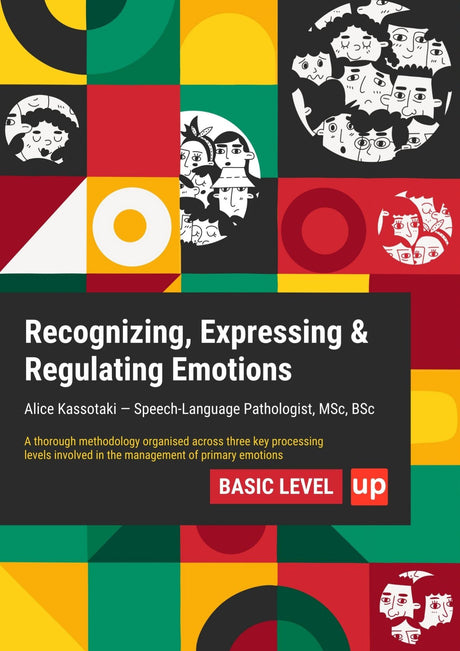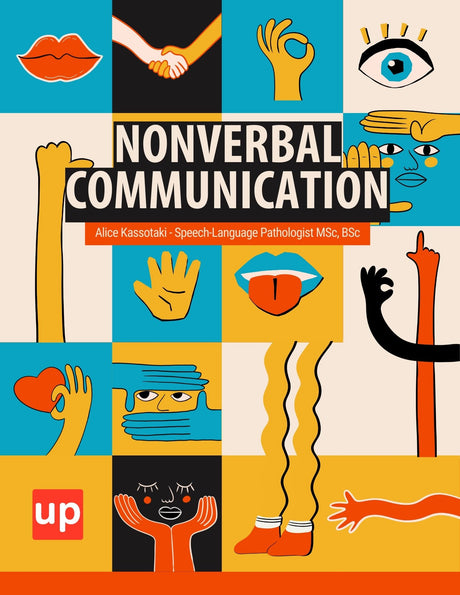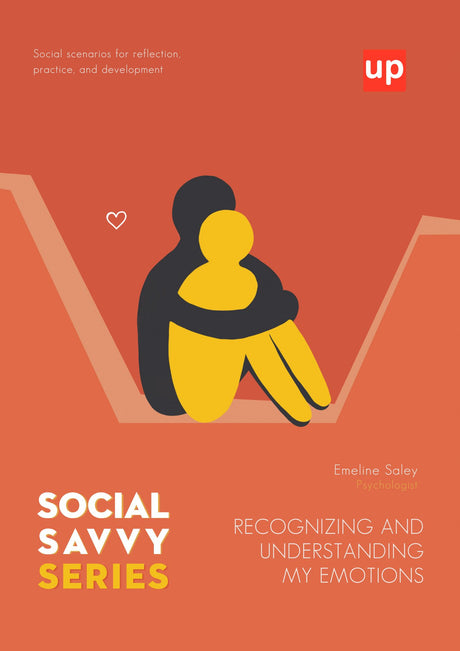Applied Behavior Analysis (ABA) therapy is a highly individualized, data-driven approach to creating meaningful behavioral change. At its core, the effectiveness of any ABA program hinges on a thorough and precise understanding of the individual's unique strengths, challenges, and motivations. This understanding is not based on guesswork; it is built upon a foundation of comprehensive assessment conducted by a Board Certified Behavior Analyst (BCBA). These assessments are the critical first step and ongoing guide that transforms the principles of behavior science into a practical, effective therapy plan.
Key Points
- Comprehensive and Individualized: BCBA assessments are thorough evaluations that capture a detailed understanding of a child's skills, behaviors, and environmental factors. This individualized approach ensures that intervention strategies are tailored to the unique needs and strengths of each client.
- Foundation for Effective Intervention: These assessments provide the critical data needed to develop targeted teaching plans and behavior intervention plans. They guide the selection of goals that promote skill development in areas such as daily living skills, communication, social interaction, and emotional regulation.
- Ongoing and Dynamic Process: BCBA assessments are not a one-time event but an ongoing process. Continuous data collection and re-assessment allow for adjustments in therapy to address changing needs, manage challenging behaviors, and support positive behaviors and overall child's development.
The Foundation: Why BCBA Assessments Are Critical in ABA Therapy

Assessments in ABA are not merely diagnostic tools; they are the strategic blueprints for intervention. They provide the objective data needed to identify target skills, understand the reasons behind challenging behaviors, and measure progress over time. Thorough assessments are essential in ABA therapy, as they ensure a detailed understanding of behavior patterns and inform the development of effective, personalized intervention plans. Without this initial and ongoing evaluation, therapy would lack direction and the ability to adapt to a client’s evolving needs.
Introduction to Applied Behavior Analysis
Applied Behavior Analysis (ABA) is a scientifically validated approach that helps individuals—especially those with autism spectrum disorder and other developmental disabilities—learn new skills and improve behaviors that enhance their quality of life. At the heart of applied behavior analysis ABA is the use of systematic assessments to understand each person’s unique strengths, challenges, and learning needs. ABA assessments are not just a starting point; they are an ongoing process that provides valuable insights into behavior patterns, communication skills, and areas for growth. By carefully analyzing this information, ABA practitioners can design highly individualized intervention plans that support meaningful progress. For families navigating the world of ABA therapy, these assessments offer clarity and direction, ensuring that every step of the therapy process is tailored to the child’s specific needs.
Defining the Core Purpose of ABA Assessments
The primary purpose of an initial assessment in ABA therapy is to gather specific, measurable information to guide treatment planning. This comprehensive assessment process achieves several goals: it identifies an individual’s current skill levels across various domains (communication, social, adaptive), pinpoints specific deficits that require intervention, and analyzes challenging behaviors to understand their underlying purpose. In addition to identifying areas of need, recognizing the child's strengths during the assessment is essential for developing a personalized and effective intervention plan. This initial data creates a baseline against which all future progress is measured, ensuring accountability and data-driven adjustments to the treatment plan. It is a dynamic process that informs every therapeutic decision.
Criterion-Referenced vs. Norm-Referenced: A Fundamental Distinction
BCBAs use different frameworks to evaluate skills, with two prominent types being criterion-referenced and norm-referenced assessments. Understanding their distinction is crucial.
A norm-referenced assessment compares an individual’s performance to that of a larger, representative group of peers of the same age or grade. Assessment tools like the Vineland Adaptive Behavior Scales fall into this category. While useful for diagnostic purposes or determining eligibility for services, they offer limited guidance for day-to-day therapy planning because they don’t detail the specific skills an individual needs to learn.
In contrast, criterion-referenced assessments measure an individual’s performance against a predetermined set of criteria or standards, rather than against other people. These assessments, particularly criterion-referenced skill assessments, are the workhorses of ABA. They break down broad skill areas into specific, teachable components. Task analysis is often used within these assessment tools to break down complex behaviors into smaller, manageable steps, supporting individualized intervention planning. Domains assessed by these tools often include language, social behavior, and basic living skills, allowing a BCBA to see exactly what a person can and cannot do. This detailed information directly informs the creation of targeted learning objectives.
Unpacking Behavioral Assessments: The Power of Functional Behavior Analysis (FBA)
While skill acquisition is a major focus, ABA is also renowned for its effectiveness in behavior reduction. This begins with behavioral assessments, most notably the Functional Behavior Assessment (FBA). An FBA is a systematic process used to identify the function of target behaviors—the “why” behind a person’s actions.
BCBAs analyze behavior patterns to determine if a behavior is maintained by gaining attention, escaping a demand, accessing a tangible item, or automatic sensory reinforcement. During direct observation, it is important to document when a behavior occurs, as this information helps inform the assessment and leads to a more accurate understanding of the child's actions. By understanding this function, interventions can be designed that teach appropriate replacement behaviors that serve the same purpose. This approach is far more effective and ethical than simply trying to suppress a behavior without addressing the underlying need it communicates. The FBA process provides the essential data to create a function-based behavior intervention plan. BCBAs use this assessment data to manage behaviors and implement positive reinforcement strategies, ensuring consistency and supporting skill development.
Navigating the Landscape of Key Skill-Based Assessments

Once the purpose and types of assessment are understood, the focus shifts to the specific tools that map out an individual’s learning journey. These assessments often evaluate the child's ability to perform daily living tasks independently across self-care, home, community, and work environments. Skill-based assessments provide the detailed roadmap for building new competencies.
The Role of Skill-Based Assessments in Guiding Progress
Skill-based assessments are designed to evaluate an individual’s abilities in critical life domains, such as communication, social interaction, self-care, academic readiness, play skills, expressive language, and receptive language. They move beyond identifying problem behaviors to building a complete picture of an individual’s current Learning Repertoires. The goal is not just to find deficits but also to identify strengths that can be leveraged during the learning process. The detailed output from these assessments allows a BCBA to create a curriculum that is sequenced logically, ensuring prerequisite skills are mastered before moving on to more complex ones.
Essential Tools for Comprehensive Skill Development
In ABA, several well-regarded skill-based criterion-referenced assessments are used to guide intervention. These tools provide a structured framework for evaluating and tracking a wide range of skills.
One of the most common types of skill assessments is the Assessment of Basic Language and Learning Skills - Revised (ABLLS-R), which tracks skills across 25 domains, including visual performance, motor imitation, motor skills, and social interaction. Another cornerstone is the Verbal Behavior Milestones Assessment and Placement Program (VB-MAPP), which focuses heavily on the assessment of verbal behavior skills based on B.F. Skinner’s analysis of language. It evaluates not only what a child can say but also the function of their language (e.g., requesting, labeling, conversing). In addition to these, other tools such as the assessment of functional living (e.g., AFLS) evaluate functional living skills, school skills, vocational skills, and community participation skills, providing a comprehensive overview of essential life domains. Some curriculum programs are specifically designed to foster advanced knowledge in language, cognitive, and academic skills, supporting learners in expanding their abilities beyond basic levels. By using such structured tools, BCBAs can ensure that therapy is comprehensive, systematic, and targeted toward developing functional skills.
Expanding the Assessment Toolkit: Beyond Core Skill Inventories
A truly comprehensive assessment goes beyond a single tool. A skilled BCBA draws from a diverse toolkit, combining different methodologies to create a holistic and nuanced understanding of the client. This ensures that the treatment plan is robust, practical, and accounts for the individual’s entire ecosystem. Assessment tools are also used to evaluate independent living skills and support individuals with autism spectrum disorder as well as related developmental disorders.
Strategic Integration: The Power of Combining Assessments
Relying on a single assessment can provide a limited or skewed perspective. Therefore, BCBAs often use a combination of assessments to triangulate information and build a complete clinical picture. For instance, a BCBA might use the VB-MAPP to detail language goals, the Vineland-3 (a norm-referenced tool) to compare adaptive skills to peers for funding or program placement purposes, and a Functional Behavior Assessment (FBA) to address a specific challenging behavior. This multidimensional approach ensures that both skill acquisition and behavior reduction are addressed simultaneously and cohesively.
Descriptive Assessments: Capturing Behavior in Natural Environments
Before conducting a formal FBA, a BCBA often starts with Descriptive assessments. This involves direct observation of the individual in their natural environment (e.g., home, school, community) without manipulating any variables. Techniques like ABC (Antecedent-Behavior-Consequence) recording and scatterplots are used to collect data on when, where, and under what conditions behaviors occur. These assessments are invaluable for identifying correlations and forming initial hypotheses about the rates of behaviors and their potential functions, providing critical context that structured assessments might miss.
Transitions Assessments: Planning for Future Success
As individuals grow and move through different life stages, their needs change. Transitions assessments are specialized evaluations focused on preparing an individual for a new environment or major life change, such as moving from early intervention to elementary school, or from high school to adulthood. These assessments evaluate readiness skills, including independence, vocational abilities, self-advocacy, and community safety. The goal is to proactively identify and teach the skills necessary to ensure a smooth and successful transition, maximizing long-term quality of life.
Parent-Focused Assessment: Empowering Caregivers as Partners
Parents and caregivers are the most important members of the therapy team. A parent-focused assessment involves systematically gathering information from them through interviews, checklists, and rating scales. This process achieves two key goals. First, it provides the BCBA with invaluable insight into the child's behavior in various settings and a deeper understanding of the family's priorities and goals. Second, it helps identify areas where caregivers may need support, forming the basis for effective parent training. Empowering parents with the skills and confidence to implement strategies is a critical component of generalizing progress beyond therapy sessions.
The Assessment Experience: Setting Clients Up for Success

The assessment experience is a foundational part of the ABA therapy process, designed to set each client up for success from the very beginning. A Board Certified Behavior Analyst (BCBA) typically leads this process, using a combination of direct observation, structured interviews, and specialized assessment tools to gather a comprehensive picture of the child’s abilities and challenges. The environment is carefully structured to help the child feel comfortable and engaged, which is essential for accurate assessment and effective skill development. By focusing on both strengths and areas of need, ABA practitioners can develop intervention strategies that not only address challenging behaviors but also build on existing skills. The information collected during this phase is used to create a personalized treatment plan, ensuring that every aspect of the therapy process is informed by a deep understanding of the child’s unique profile.
What to Expect During an Assessment
During an ABA assessment, families can expect a thorough and supportive process that aims to capture a complete picture of the child’s abilities and needs. A BCBA will often begin with direct observation, watching how the child interacts in different settings—such as at home, in a clinic, or during play—to gather real-world information about their behavior and learning skills. Structured interviews with caregivers are also a key part of the assessment process, providing insights into the child’s developmental history, daily routines, and any challenging behaviors that may occur. In addition, the BCBA may use assessment tools like the Verbal Behavior Milestones Assessment and Placement Program (VB-MAPP) or the Assessment of Basic Language and Learning Skills - Revised (ABLLS-R) to evaluate a range of skills, including academic skills, basic language, and social interaction. These tools help identify both strengths and areas for growth, and the assessment is often designed to be play-based and engaging, making the child feel at ease and motivated to participate. The ultimate goal is to gather the information needed to develop a placement program and guide effective intervention.
Preparing for an Assessment
Preparation is key to ensuring a smooth and productive assessment experience. Caregivers can help by collecting information about the child’s developmental history, daily routines, and any challenging behaviors they have observed. Sharing this information with the BCBA during the assessment process provides a more complete understanding of the child’s needs and helps tailor the evaluation. It’s also helpful to prepare the child by explaining, in age-appropriate terms, what will happen during the assessment and encouraging them to participate and ask questions. Ensuring the child is well-rested, comfortable, and familiar with the assessment environment can reduce anxiety and set the stage for a positive experience. By taking these steps, families can help maximize the effectiveness of the assessment and support their child’s journey toward skill development and success.
Common Misconceptions About Assessments
Many families approach ABA assessments with uncertainty, often due to common misconceptions. One frequent misunderstanding is that assessments are solely focused on identifying deficits or problem areas. In reality, the assessment process is designed to highlight both strengths and opportunities for skill development, forming the basis for personalized intervention strategies that build on what the child can already do. Another misconception is that assessments are a one-time event. In fact, ABA therapy relies on ongoing assessment, with regular updates and evaluations to ensure the treatment plan remains effective and responsive to the child’s changing needs. By understanding that assessments are a dynamic, supportive process, caregivers can feel more confident and empowered to participate actively in their child’s ABA therapy journey, knowing that each step is guided by data and a commitment to meaningful progress.
The BCBA's Guide to Strategic Assessment Selection
With many types of assessments available, a BCBA’s clinical expertise is crucial in selecting the most appropriate tools for each unique client. Board certified behavior analysts are responsible for conducting and interpreting these assessments to evaluate behavior, skills, strengths, and areas needing intervention, particularly for individuals with developmental disorders such as autism spectrum disorder (ASD). This decision is not arbitrary; it is guided by a combination of factors related to the client’s profile, the goals of therapy, and ethical standards.
Key Considerations for Tailoring Assessments to Client Needs
The selection of an assessment is highly individualized. A BCBA considers the client’s age, developmental level, and primary areas of concern. For a very young child with limited vocal skills, a language-focused assessment like the VB-MAPP is a logical starting point. For an adolescent struggling with social interactions, an assessment targeting social skills would be more appropriate. The presenting problem also dictates the approach; if the primary concern is severe challenging behavior, a comprehensive FBA will take precedence. The BCBA’s goal is to use assessment to answer specific clinical questions that will directly lead to effective intervention.
Ethical Considerations in Assessment Choices
BCBAs are bound by the Behavior Analyst Certification Board's (BACB) ethical code, which mandates that they select and use assessments that are scientifically validated and appropriate for the client. This means choosing tools that are relevant to the behavior being assessed and suitable for the individual’s cultural and linguistic background. Furthermore, the assessment process must be conducted with dignity and respect, and the results must be explained clearly to the client and caregivers. The ultimate ethical obligation is to use assessment data to design interventions that are effective, evidence-based, and lead to meaningful improvements in quality of life.
From Assessment Data to Actionable Intervention Strategies

The assessment process culminates in its most important phase: translating the collected data into a coherent, actionable treatment plan. This is where the BCBA’s analytical skills are paramount, transforming raw numbers and observations into a roadmap for progress. Using this assessment data, BCBAs create interventions and design behavior programs tailored to address specific skill areas such as social skills, language, and cognition. Collaboration with occupational therapists is often essential during intervention planning, ensuring a comprehensive, multidisciplinary approach to supporting children and young people with ASDs.
Interpreting Assessment Results: Building a Treatment Plan
After administering assessments, the BCBA synthesizes all the information to create a comprehensive picture of the client. This involves analyzing skill deficits from criterion-referenced tools, understanding the function of behaviors from the FBA, and incorporating priorities from parent interviews. From this synthesis, the BCBA develops specific, measurable, achievable, relevant, and time-bound (SMART) goals. For example, data showing a deficit in requesting desired items might lead to a goal of teaching the child to use specific words or signs (mands) to communicate their wants, which directly addresses the function of a challenging behavior like grabbing. This could involve a relational training approach to help the learner understand relationships between stimuli.
Monitoring Progress and Adapting Interventions
Assessment is not a one-time event. The initial assessments establish a baseline, but data collection is continuous throughout therapy. The BCBA and therapy team constantly track the client's performance on targeted goals. This ongoing data stream allows the team to see what is working and what is not. If a client is not making progress on a particular skill, the BCBA uses the data to analyze the teaching procedure and make necessary modifications, ensuring the learning process remains efficient and effective.
The BCBA's Role in Continuous Data-Driven Decision Making
The BCBA acts as the clinical leader, responsible for overseeing the entire therapeutic process. A central part of this role is engaging in continuous data-driven decision-making. They regularly review progress graphs, analyze trends, and meet with the therapy team and family to discuss outcomes. This iterative process of assess, intervene, and analyze ensures that the ABA program remains dynamic and responsive to the client's progress, maximizing the potential for meaningful and lasting change.
Conclusion
A well-executed assessment is the cornerstone of high-quality ABA therapy. It provides the essential clarity and direction needed to move beyond a one-size-fits-all approach and deliver truly personalized care. By strategically employing a combination of assessments—from broad behavioral assessments to highly specific skill-based criterion-referenced assessments—BCBAs can identify an individual’s unique learning needs, understand the reasons behind challenging behaviors, and design interventions that are both effective and compassionate.
For families beginning their ABA journey, understanding this assessment process empowers them to be active, informed participants in their child’s care. It demystifies how therapy goals are chosen and provides a transparent framework for measuring success. Ultimately, the meticulous, ongoing process of assessment is what enables ABA therapy to unlock potential, build critical life skills, and create meaningful, positive change for individuals and their families.
Frequently Asked Questions (FAQs)
What is the purpose of BCBA assessments in ABA therapy?
BCBA assessments are designed to gather detailed information about an individual's current skills, behaviors, and environmental factors. This information guides the development of personalized intervention plans that target specific areas such as communication, social skills, daily living skills, and behavior management.
How often are BCBA assessments conducted?
Assessments are an ongoing process in ABA therapy. Initial assessments establish a baseline, while continuous data collection and periodic re-assessments allow for adjustments in treatment to address the individual's evolving needs and progress.
Who conducts BCBA assessments?
Assessments are conducted by a Board Certified Behavior Analyst (BCBA), a professional with specialized training and certification in applied behavior analysis and behavior assessment.
What types of skills are evaluated during BCBA assessments?
BCBA assessments evaluate a broad range of skills including language development, social interaction, academic skills, motor skills, functional living skills, vocational skills, and emotional regulation.
How do BCBA assessments help with challenging behaviors?
Through tools like the Functional Behavior Assessment (FBA), BCBAs identify the function or purpose of challenging behaviors. This understanding enables the creation of behavior intervention plans that teach appropriate replacement behaviors and use positive reinforcement strategies.
How can parents prepare for a BCBA assessment?
Parents can prepare by gathering relevant developmental history, documenting any challenging behaviors, and reflecting on their child's strengths and challenges. Sharing this information during the assessment helps create a comprehensive and effective treatment plan.
Are BCBA assessments only for children with autism spectrum disorder?
While BCBA assessments are commonly used for individuals with autism spectrum disorder and related developmental disabilities, they can also be applied to others who may benefit from behavior analysis and skill development interventions.
What is the difference between criterion-referenced and norm-referenced assessments?
Criterion-referenced assessments measure an individual's performance against specific skill criteria, providing detailed information for intervention planning. Norm-referenced assessments compare performance to a peer group and are more often used for diagnostic or eligibility purposes.
How do BCBAs use assessment results in therapy?
BCBAs analyze assessment data to create measurable goals, design tailored teaching plans, and monitor progress. This data-driven approach ensures that interventions are effective and adapted as the individual's needs change.
Can BCBA assessments address emotional challenges and mental health?
Yes, assessments consider emotional regulation and mental health aspects as part of the overall behavior and skill profile, allowing for interventions that support emotional well-being alongside skill development.
Original content from the Upbility writing team. Reproducing this article, in whole or in part, without credit to the publisher is prohibited.
References
- Sundberg, M. L. (2008). The Verbal Behavior Milestones Assessment and Placement Program (VB-MAPP). AVB Press.
- Partington, J. W. (2006). The Assessment of Basic Language and Learning Skills-Revised (ABLLS-R). Behavior Analysts, Inc.
- Partington, J. W., & Mueller, M. M. (2012). Assessment of Functional Living Skills (AFLS). Behavior Analysts, Inc.
- Cooper, J. O., Heron, T. E., & Heward, W. L. (2020). Applied Behavior Analysis (3rd ed.). Pearson.
- Behavior Analyst Certification Board. (2022). Professional and Ethical Compliance Code for Behavior Analysts. BACB.
- Matson, J. L., & Neal, D. (2009). Applied Behavior Analysis for Children with Autism Spectrum Disorders. Springer.
- O’Neill, R. E., Horner, R. H., Albin, R. W., Sprague, J. R., Storey, K., & Newton, J. S. (2015). Functional Assessment and Program Development for Problem Behavior: A Practical Handbook (3rd ed.). Cengage Learning.
- National Autism Center. (2015). National Standards Report. Retrieved from https://www.nationalautismcenter.org
- Leaf, R., & McEachin, J. (1999). A Work in Progress: Behavior Management Strategies and a Curriculum for Intensive Behavioral Treatment of Autism. DRL Books.
- Dixon, M. R. (2017). The PEAK Relational Training System. Behavior Analysts, Inc.









